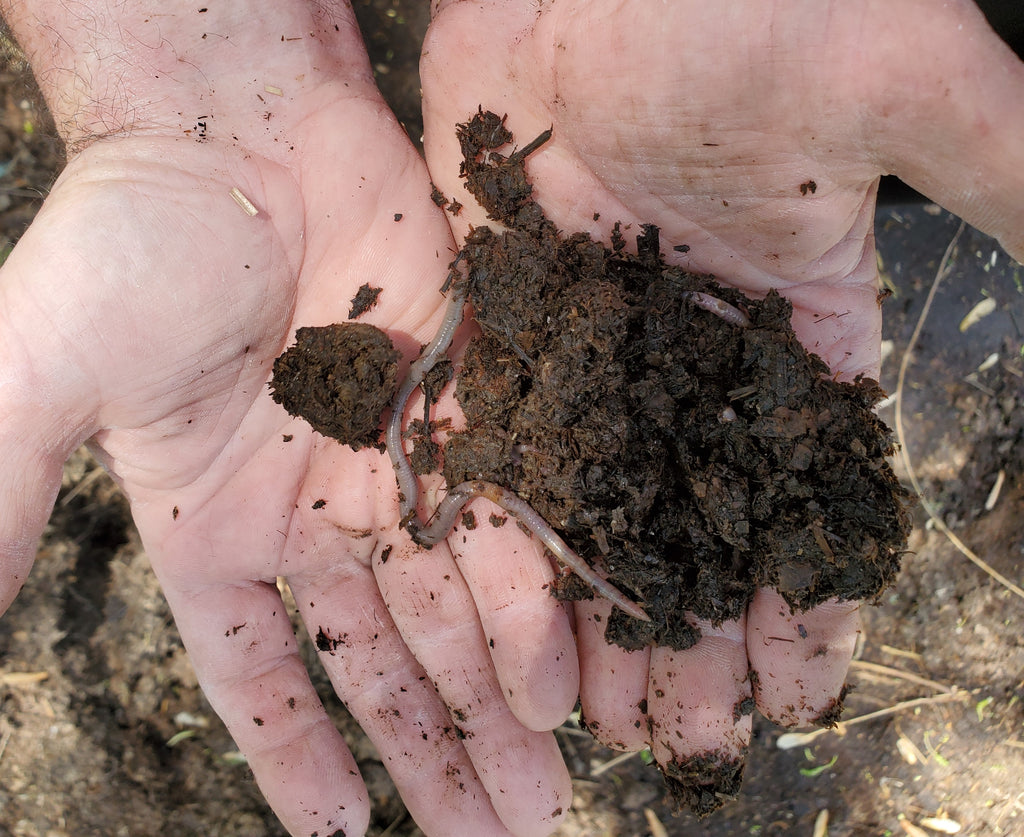The Key to a Sustainable, Healthy Garden is the Soil!
When was the last time that you took a walk through the woods? Do you remember the soft, loamy soil that squished as you walked on it? This is healthy soil! Healthy soil has its very own tiny little eco system going on in it. Mycelium, worms, insects, fungi, and moistness are all signs of a healthy soil. If you have ever reached down and picked up a handful of that soil, you would find another tiny little world going on amongst the moist, coffee-ground like soil. In the woods, the soil is usually not disturbed and nature just takes its coarse by layering leaves and other natural debris creating a soft covering for the floor.
For years my husband and I tilled the soil for our garden. While tilling may not kill out entirely the eco system that is so essential to good plant growth, it does disrupt it in a way that can take it a very long time for it to recover. It can take living organisms that were meant to be under the soil and throw them up on top drying out their bodies along with the soil itself.
We have in the last few years adopted the "No-till" method and are very pleased with the results. To begin a new garden, we mark off the border. There is no need to dig up any weeds or grass as the next few steps will kill it off and actually turn it into compost that will enhance your soil. Next, put down several layers of cardboard. Always remove any tape or staples if you are using recycled boxes. Finally, cover the cardboard with compost of some type. Our choice is whatever is available at a reasonable cost and for us this seems to be composted horse manure. Water each layer as you put it down on the grass. Your layers are completed when you put some kind of mulch, straw or wood chips on top. The cardboard actually attracts the worms and they carry the compost into the soil. The final step is to wait at least 3 months so that the cardboard can decompose and the worms can mix your little lasagna layers of cardboard, grass, and compost and mulch. The more that you water, the faster the process will happen!
This process can be shortened by using newspaper rather than cardboard, however, you will most likely have a little grass and weeds to deal with that didn't get killed off. Either way, this method provides a nourishing environment for your little eco system to take off!
After planting whatever it is that you are wanting to grow, be sure to mulch using straw, mulch from bark, or some kind of covering for the bare soil. One time I used Coco bean mulch and while this worked well, it was a little pricey! Have you ever noticed that soil never remains barren. It always seeks a covering and if you don't provide one, nature will and it may be weeds, so choose your covering! I do not recommend hay as it contains too many seeds that can germinate in your garden.
When the plants are finished growing, do as little as possible to disturb the soil, by pulling them up and twisting them to loosen the root system. In the Fall it is imperative to amend your soil by applying a layer of new compost in order to feed the soil and to keep a covering on it.
So many times I have people tell me that they just don't have a "green thumb!" Well, there are seasons that some things grow well and others don't. That is why it is good to have a diverse selection of plants in your garden. Everyone can grow something if they will just put the seeds in some good healthy soil. I hope that this quick and easy method for starting a new garden inspires you to go out and grow some food.


